What’s the ROI of Automated Pallet Changing Machines in Germany's Precision Sector?
Are you constantly battling high operational costs and production bottlenecks in your plant? These issues silently eat into your profits. They slow down your entire workflow and make it difficult to compete. You know there has to be a better way. An automated pallet changing machine is not just another piece of equipment; it's a strategic solution to unlock new levels of efficiency and profitability in demanding environments.
The Return on Investment (ROI) for automated pallet changing machines in Germany's precision sector is typically realized within 12 to 24 months. This rapid payback comes from significant reductions in labor costs, a major increase in throughput, minimized product damage during transfers, and a safer workplace for your team.
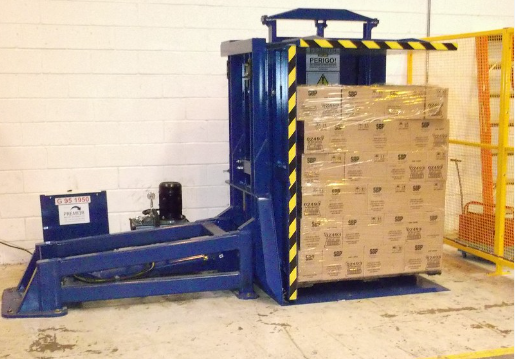
You might be thinking, "That's Germany. We have different challenges here." And you're right. But the fundamental principles of efficiency, cost-saving, and reliability are universal. The high standards of German manufacturing provide a powerful case study. If this technology delivers a strong ROI there, it can deliver transformative results in any high-stakes industrial setting, including a modern steel mill. Let's break down exactly how this investment pays off, step by step.
How Can Automated Pallet Changers Directly Reduce Your Operational Costs?
Are rising labor and energy costs a constant threat to your profit margins? You see the inefficiency in manual processes every day. These old methods are not just slow; they are expensive and unpredictable. Finding a solution that provides a clear, measurable cost reduction is a top priority. Automating your pallet handling directly tackles these core operational costs at their source, giving you more control over your budget.
Automated pallet changers directly reduce operational costs by minimizing the need for manual labor for repetitive tasks. They also cut down on forklift usage, which lowers fuel, electricity, and maintenance expenses. Most importantly, they prevent costly product damage during transfers, leading to predictable and lower per-unit handling costs.
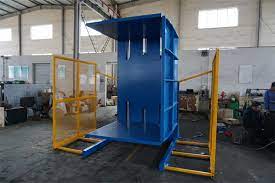
Let's dive deeper into the specific ways automation translates into tangible savings. For a steel mill owner like yourself, every cost-saving measure must be scrutinized. You need to see a clear path from investment to return. The financial impact of an automated pallet changer is not just on one area; it creates a ripple effect of savings across your operation. This is especially true when handling heavy and valuable products like steel coils or finished parts, where manual handling introduces significant risk and expense.
Labor Cost Optimization
The most immediate saving comes from labor. Manual pallet changing requires multiple workers. Their time is spent on a low-value, repetitive, and physically demanding task. Automation reassigns this labor. A single operator can oversee a machine that does the work of several people, but much faster and more consistently. This means your skilled workers can be moved to more complex, value-adding roles, like quality control or machine supervision. In a 24/7 operation, these labor savings multiply across every shift, every day.
Material and Product Damage Reduction
In the steel industry, products are heavy and can be easily damaged. A small dent or scratch on a finished steel coil can lead to rejection by a client. Manual handling with forklifts is a major source of this damage. A forklift tine can puncture a product, or a clumsy maneuver can cause a pallet to drop. An automated pallet changer handles loads with precision. It clamps, tilts, and transfers products smoothly and securely, following a programmed and repeatable path. This virtually eliminates handling-related damage, which directly protects your revenue and reputation.
Energy and Equipment Maintenance Savings
Fewer forklift movements mean lower costs. Whether your forklifts are electric or run on fuel, their operational cost is significant. Automation reduces the number of forklifts needed for internal logistics. It also shortens the distances they travel. This leads to direct savings in energy or fuel consumption. It also reduces wear and tear on your forklift fleet, extending their service life and cutting down on maintenance bills and replacement costs. The table below shows a simple cost comparison.
| Cost Factor | Manual Handling (Per Year) | Automated Handling (Per Year) | Annual Savings |
|---|---|---|---|
| Labor (2 workers/shift, 3 shifts) | $210,000 | $35,000 (1 supervisor) | $175,000 |
| Product Damage (1% of value) | $100,000 | $5,000 | $95,000 |
| Forklift Ops (Fuel/Maint.) | $45,000 | $15,000 | $30,000 |
| Total Estimated Cost | $355,000 | $55,000 | $300,000 |
This is a simplified model, but it clearly shows the powerful financial argument for automation. The savings are substantial and directly impact your bottom line.
What Role Do These Machines Play in Achieving 95% Equipment Uptime?
Is unscheduled downtime your biggest enemy? A breakdown in one area, like material handling, can bring your entire production line to a halt. When aging equipment and inefficient manual processes create bottlenecks, meeting your target of 95% uptime feels impossible. These interruptions destroy your production schedule and hurt your credibility with customers. Automated pallet changers build a stable, predictable, and fast link in your production chain, which is essential for maximizing uptime.
Automated pallet changers play a critical role in achieving high equipment uptime by creating a consistent and reliable material flow. They eliminate the delays and errors of manual handling, reduce line stoppages caused by pallet quality issues, and allow for integration with predictive maintenance systems. This ensures your main production machinery is always fed on time.
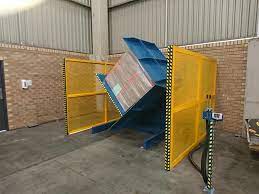
Let's look closely at how a seemingly simple logistic machine can have such a large impact on the availability of your primary assets. For a steel mill, uptime is everything. Your goal of 95% is ambitious but achievable with the right systems in place. An automated pallet changer isn't an isolated island of efficiency. It's a critical bridge that connects different stages of production. When that bridge is strong and reliable, the entire factory runs smoother.
Eliminating Manual Bottlenecks
Manual pallet handling is inherently inconsistent. The speed depends on the worker, the availability of a forklift, and the traffic in the aisle. A short delay here and there adds up. It can starve a machine of materials, forcing it to sit idle. An automated system works at a constant, predictable pace. For example, it might transfer a pallet every 60 seconds, every time. This consistency allows you to fine-tune your entire production schedule. You can synchronize your output with your input, eliminating the "hurry up and wait" problem that plagues so many factories.
Ensuring Consistent Input for Production Lines
Many automated production lines, like wrapping machines or robotic stackers, are sensitive to the quality and positioning of pallets. A broken or non-standard pallet introduced manually can cause a machine to jam. This can stop the line for minutes or even hours. An automated pallet changer can be part of your quality control process. It can transfer goods from an incoming, low-quality pallet to a high-quality, standardized in-house pallet before it ever reaches your sensitive machinery. This simple step prevents countless micro-stoppages and keeps your main production lines running.
Integrating with Predictive Maintenance
Modern pallet changers are smart machines. They are equipped with sensors that monitor their own health. They track cycle counts, motor performance, and sensor status. This data can be fed into your central maintenance system. Instead of waiting for a breakdown, your system can flag a component that is nearing the end of its service life. You can then schedule maintenance during a planned shutdown. This proactive approach is the core of predictive maintenance and is essential for reaching a 95% uptime target. It transforms maintenance from a reactive fire-fight into a planned, controlled activity.
| Uptime Factor | Impact of Manual Handling | Impact of Automated Handling |
|---|---|---|
| Material Flow | Inconsistent, unpredictable delays | Consistent, synchronized with production |
| Input Quality | Risk of bad pallets causing jams | Standardized pallets, reduced jam risk |
| Reliability | Human error, forklift availability | High reliability, predictable cycles |
| Maintenance | Reactive, causes unplanned downtime | Predictive, planned during shutdowns |
By solving these small but critical issues in your logistics chain, an automated pallet changer supports the health and performance of your entire factory.
How Do Automated Systems Integrate with a Broader Digital Transformation Strategy?
You are already moving towards a smarter factory with MES and IoT. But are you concerned that your physical logistics will remain a "black box" of data? A truly smart factory needs visibility over every process, including how materials move. Without data from your handling equipment, your digital overview is incomplete. This makes true optimization impossible. Modern automated pallet changers are not just machines; they are crucial data points in a fully connected digital ecosystem.
Automated pallet changers integrate seamlessly with a digital transformation strategy by acting as intelligent nodes in your material flow. Equipped with PLC controls and sensors, they provide real-time data on cycle times, throughput, and operational status directly to your MES and ERP systems. This enables complete production visibility and data-driven decision-making.
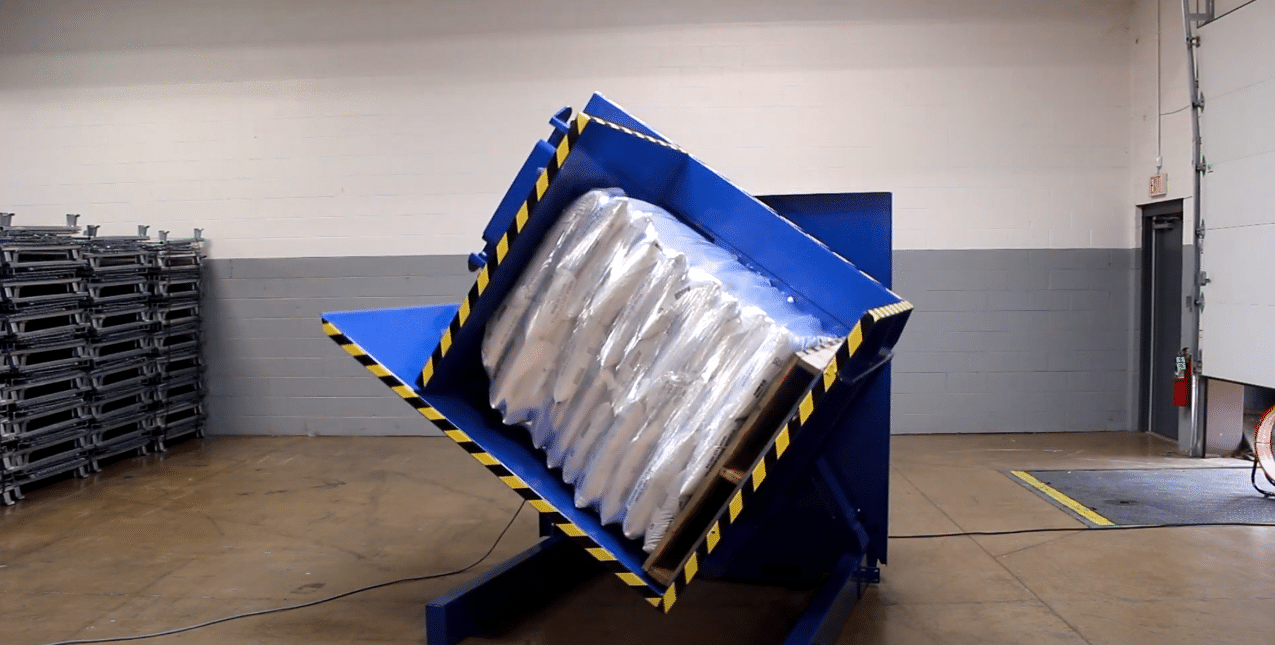
Let's dive deeper into this integration. Your vision for a digital factory is the right one. It's the future of efficient manufacturing. But software and sensors on your main production line are only half the story. The physical movement of goods between those lines is just as important. Integrating your material handling equipment is what closes the loop, turning isolated data islands into a unified, intelligent system. Here is how an automated pallet changer becomes a key part of your digital strategy.
Data Collection for Full Visibility
Every action the pallet changer takes can be recorded. How long did it take to handle one pallet? How many pallets have been processed in the last hour? Is the machine waiting for a product? Is there an error? All this information is captured by the machine's PLC (Programmable Logic Controller). This PLC can easily communicate with your higher-level systems, like a Manufacturing Execution System (MES). Your central dashboard no longer has a blind spot. You can see, in real-time, the flow of goods into and out of a production cell. This visibility is the foundation of all optimization efforts.
Enabling Smart Scheduling and Traceability
Once your MES knows the status of your pallet changer, it can make smarter decisions. If the MES sees that a production line is about to run out of raw materials, it can automatically signal the pallet changer to prepare the next load. This is a step towards autonomous internal logistics. Furthermore, by connecting pallet data with product data (for instance, by scanning a barcode on the load), you gain full traceability. You know exactly which batch of products was on which pallet, and when it was transferred. This is invaluable for quality control and for meeting the strict documentation requirements of industries like automotive or aerospace.
A Building Block for Future Automation
An automated pallet changer is a perfect starting point. It's a defined project with a clear ROI. But it's also a building block for more advanced automation. Once you have an automated transfer point, you can later integrate it with Automated Guided Vehicles (AGVs) or a rail-guided system. The pallet changer becomes the handshake between different automated systems. This step-by-step approach to building a fully autonomous factory is much more manageable and less risky than trying to do everything at once.
| Digital Feature | Role of Automated Pallet Changer | Benefit to Your Factory |
|---|---|---|
| Real-Time Data | Reports cycle times, status, errors to MES. | Complete visibility of material flow. |
| Smart Scheduling | Receives commands from MES to prepare loads. | Reduces machine idle time, improves flow. |
| Product Traceability | Links product ID to handling event. | Enhances quality control and compliance. |
| Future Integration | Acts as a docking station for AGVs. | Provides a path to a fully autonomous factory. |
Investing in a smart pallet changer is not just about solving today's problems. It's about building the data-rich foundation you need for the competitive, digital future of manufacturing.
My Personal Take: Why Your Partner Matters More Than the Price Tag
Are you worried that buying a new machine is just the start of another headache? Many suppliers are happy to take your money, but they disappear when you need support. You are left with a complex piece of equipment and no one to call. I've seen it happen. A cheap price tag can quickly become your most expensive problem when production stops.
The most critical factor in a successful automation project is choosing a strategic partner, not just a supplier. A true partner provides comprehensive support from initial design to long-term maintenance. They work to ensure your investment aligns perfectly with your bigger goals, like digital transformation and profitability.
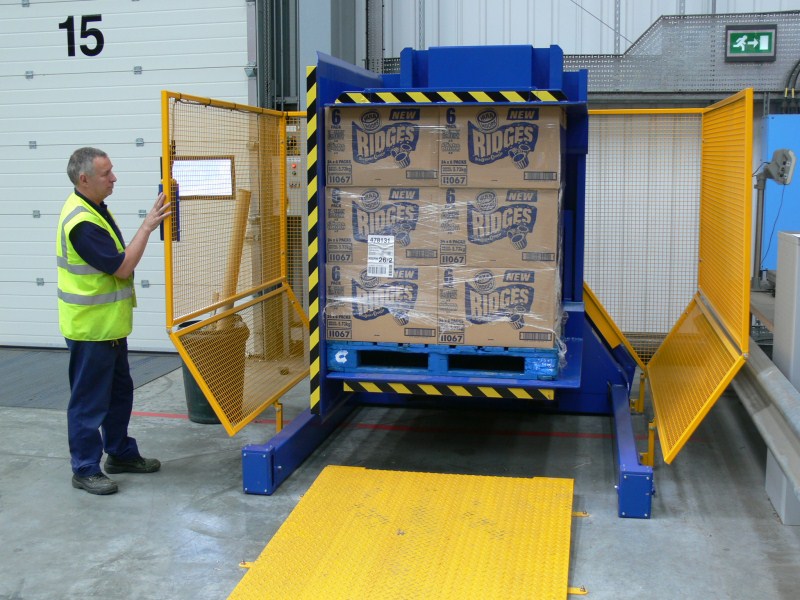
I want to share a story with you. When I was building my own factory, I had to watch every dollar. I bought a machine from a supplier who offered the lowest price. It seemed like a smart decision at the time. The machine was installed, and it worked. But a few months later, it broke down right in the middle of a huge order for an important client. I called the supplier. No answer. I sent emails. No reply. We worked around the clock, trying to fix it ourselves, but we didn't have the expertise. We lost that order, and we damaged our relationship with the client. The money I "saved" on that cheap machine cost me ten times more in lost business and stress.
That day, I learned a lesson that has defined my entire career: the true cost of a machine is not on the price tag. The true cost includes the downtime, the lost orders, and the frustration of having no support. From that day on, I stopped looking for the cheapest supplier. I started looking for a reliable partner.
Javier, I see you are a forward-thinking leader. You are looking at the big picture: digitalization, energy efficiency, long-term profitability. Your challenges with aging equipment and the need for a clear ROI are things I understand on a personal level. When you invest in a machine like an automated pallet changer, you are not just buying steel, motors, and sensors. You are buying uptime. You are buying reliability. You are investing in a smoother, more profitable future for your company.
A true partner understands this.
- They will ask about your long-term goals before they recommend a machine.
- They will work with your engineers to ensure a smooth installation and integration with your existing systems.
- They will provide thorough training for your operators and maintenance team.
- They will be there for you with technical support and spare parts years after the sale.
This is the kind of partnership that turns a simple equipment purchase into a powerful strategic advantage. It's the difference between just solving a small problem and building a more resilient, competitive, and successful business. This is the philosophy we built SHJLPACK on.
Conclusion
Automated pallet changers offer a strong, measurable ROI by cutting costs and boosting uptime. Choosing the right long-term partner is the key to unlocking their full strategic value for your factory.



